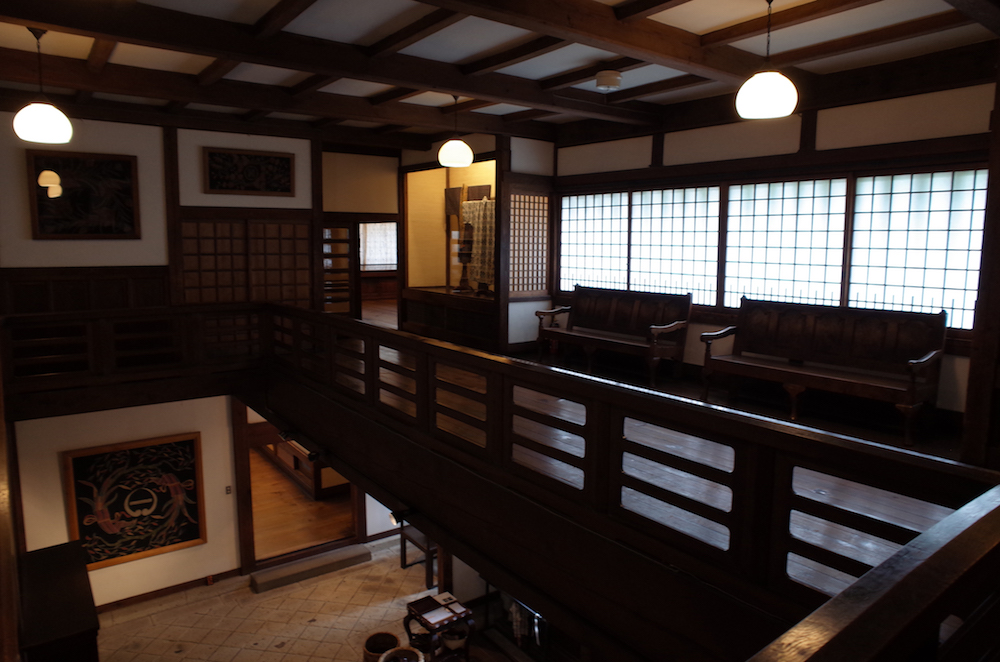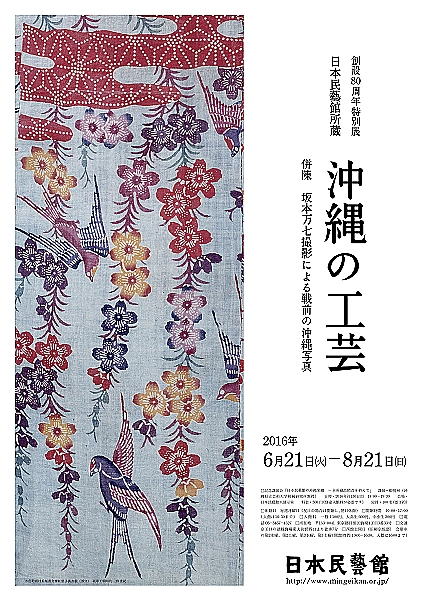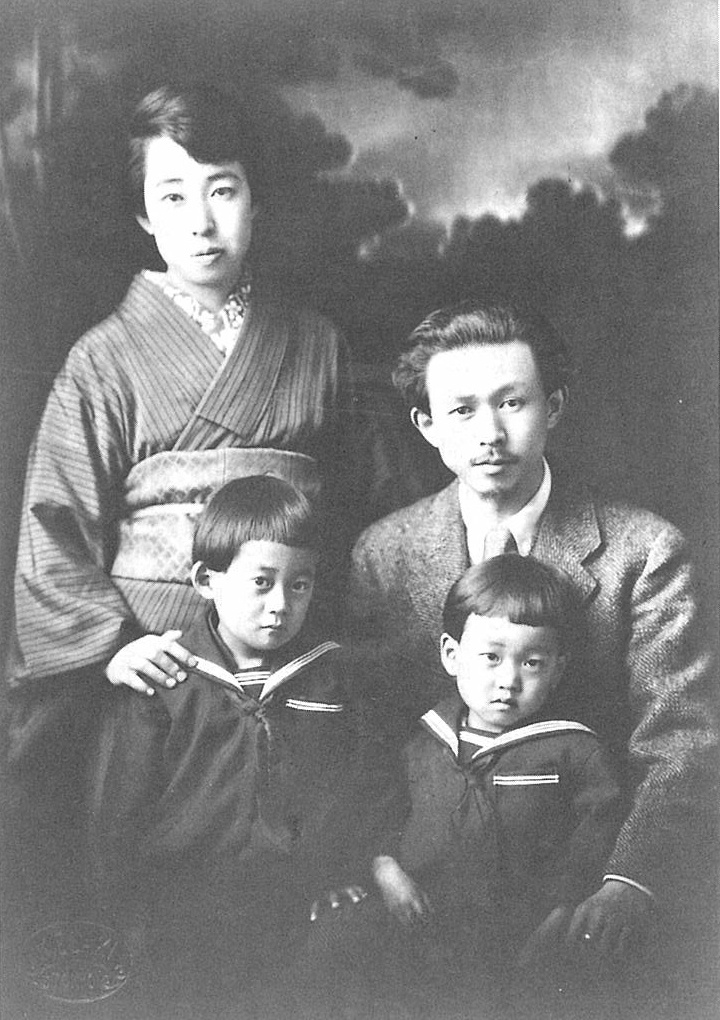In a quiet residential area of Tokyo Komaba where western-style houses and low-rise apartments are in line, a unique Japanese-style building appears suddenly. It is the Japanese Folk Craft museum which Soetsu Yanagi established.

Opposite the main building and the street, there is a West wing of museum which is old Soetsu Yanagi residence. The facade part is set up in Nagaya-mon style built in 1880 which was relocated from Tochigi prefecture. The stone roof of Oyaishi is unique.

Yanagi himself worked on the design of the two buildings. The stucco sea cucumber wall, the roof tile, the windows with Renjiko, etc., the design of the main building is tailored to Nagayamon of West Bldg.
Yanagi found simplicity and beauty on simple items for daily use and called it as folk craft. They had never been saved as collection until then. So, he collected those handicrafts from various parts of Japan and Korean Peninsula as well.
The Japanese Folk Craft museum was founded in 1936 as a place to exhibited the folk art collection. It consists from approx. 17,000 items including ceramics, dyeing, wood lacquerware, painting, metalworking, masonry, braiding, etc.. All items had been collected by Yanagi.
On the day of the visit, there was exhibition of items discovered in Okinawa before World War II. At the time Okinawa was consdirered culturally lagging and only thought to be a poor area.
Yanagi advocates “Innocent beauty”, “Healthy beauty”, “Other power’s beauty”. He developed folk art movements aiming at the production and circulation of folk art with nationwide fellows.
(From “Sori Yanagi Essay”)
About 40 years before Yanagi advocated civil art theory, similarly, There was a movement in the UK claiming to return handicrafts, the unification of life and art. Arts and crafts movement by William Morris and others.
Both folk craft and Arts & Crafts appealed to the fact that low-quality industrial products had been circulated after the industrial revolution which started at the end of the 19th century.
Yanagi felt Morris sympathy, but at the same time he said Morris “did not know the right artistic beauty”, “He himself had tried, and what he found was not artistry, it was art. it was a craft deceived by aesthetic sense. He tried what we think we would have to break away from. “(” Folk craft 40 Years ” by Soetsu Yanagi )
Yanagi criticized the Arts and Crafts movement that had become expensive “aristocratic craft art” (“What is the folk arts” Soetsu Yanagi) at the end.
Perhaps of being conscious of such contradiction, William Morris of later years departed from the design and devoted into the socialist movement.
While negating industrial production, Yanagi’s folk craft movement was aiming for mass production of everyday beauty by handworking. The denial of the artist came to the point of dogmatism and charm of the craft itself was lost.
“The folk craft movement gave one theory to the pottery. By agragging on the theory, they lost their fine works. I would like to say that it became abstract” (Jiro Aoyama Full text collection “Jiro Aoyama).
The original group members such as Jiro Aoyama and Masako Shirasu left the source of Yanagi.
However, it is not necessarily said that Morris or Yanagi himself was responsible for contradictions of the Arts and Crafts movement and for self-contradiction of the folk art movement. The real cause was in the capitalist system that dominates the world after modernization.
In the capitalist system, it can not avoid the efficiency and marketization, but on the other hand, returning to innocent unconscious beauty before individualism or reasonistism is impossible.
Under such circumstances, the commitment to handicraft inevitably leads to cost increase, the desire of unconscious beauty that existed among the people were avoided without knowing.
An attempt to overcome that bottleneck is Bauhaus. And Bauhaus found modern design. The essence of Bauhaus can be said is an exercise aiming at a design that connects people and society in industrial era.
It is almost 100 years since the establishment of Bauhaus in 1919. Was modern design overcome the bottleneck?
In the capitalist system, design is always under pressure of efficiency and marketing. The modern design that wished for the point of contact with society had became design for industries and markets. The design that can sell is a good design, an obsolescence strategy for model change is taken, and catchy styling is pleasing.
100 years later, designing will be the same. It is like walks on dangerous cliff.
When you tend to lose sight of what you ought to be, let’s visit the Japanese Art and Craft museum.
Let ‘s immerse yourself in the innocent beauty of the eve of modern design rise. Energy of things of the era that can be said that things are connected to society without any trace could felt. Let’s touch the brief color and form that human hands produced in the era when there was no word ”Design”.
(* White porcelain pot Kin Sato kiln Joseon Dynasty [Korean Peninsula] Late 17th century – early 18th century 53.8 x 43.3 cm, source: http://www.mingeikan.or.jp/collection/korea01.html)
“Pelian often came to the folk craft museum, Bruno Taut, Gropius, Eames and Mrs. Corbusier came to the folk art museum and was deeply impressed by seeing the exhibited items of the folk art” (“Yoji Yanagi” Essay Yanagi Yanagi 2011)
The thing in which the Japanese museum is located is an eternal reference item of modern design.
* References: ” Folk craft 40 Years ” Soetsu Yanagi (Iwanami Shoten)
“What is folk arts” Soetsu Yanagi (Kodansha Academic Paperback)
“Sori Yanagi Essay” Sori Yanagi (Heibonsha Library)
“Aoyama Jiro full text collection” Aoyama Jiro (Chikuma Academic Paperback)
http://www.mingeikan.or.jp/english/
text by Tetsuya Omura





![White porcelain pot Kin Sato kiln Joseon Dynasty [Korean Peninsula] Late 17th century - early 18th century](http://zeitgeist.jp/en/files/白磁壷.jpg)











